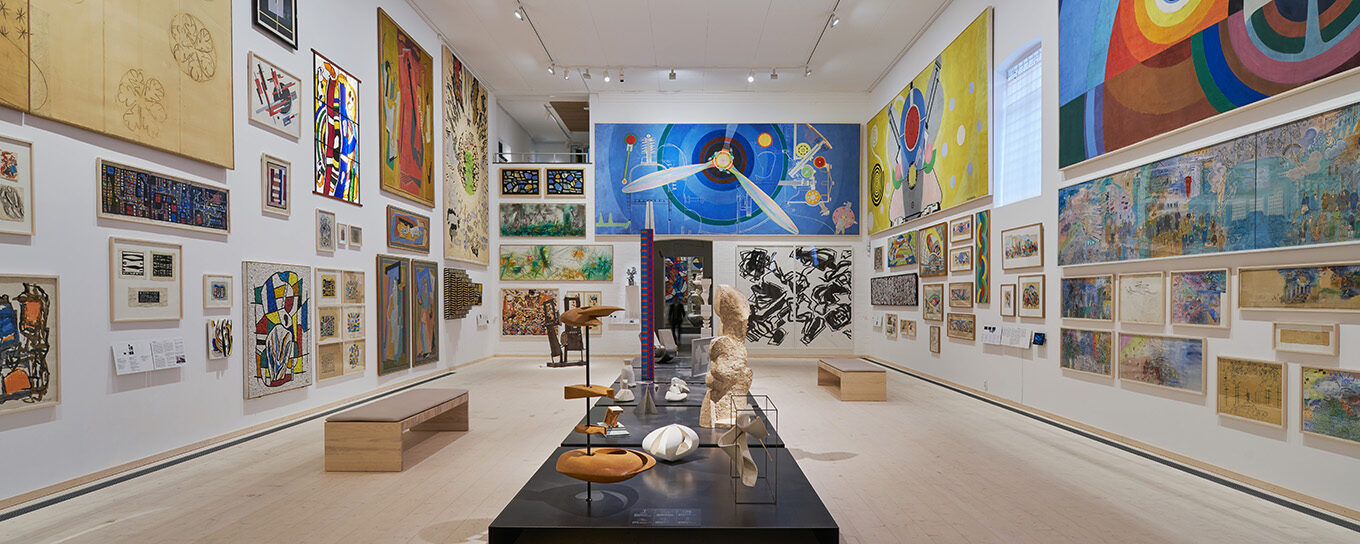- Closed
- Closed
The International Gallery
In The International Gallery the museum presents a selection of permanent and temporary projects from the end of the 1800s until today. Here you can discover unique sketches by artists such as Henri Matisse, Sonia Delaunay, Jenny Holzer and Fernand Léger.
During the first half of the 1900s, there were discussions in different contexts about how architects and artists could collaborate to integrate painting and sculpture within a building or a place. Often the discussion involved how the walls could be used as a surface for large mural paintings, mosaics and glass paintings, as in many of the projects on display in this room.
Mural art functioned as both adornment and messenger of conservative as well asprogressive ideals. Regardless of whether the expression was traditional or innovative, art was thus given an important social function. Several artists also emphasised the democratic role of art and the importance of reaching many people.
France was one of the European countries in which ideas about the integration of thearts had the strongest foothold, and government investments in murals culminated at the 1937 World Exhibition in Paris. After the Second World War, the Catholic Church also gained significance in the dissemination of modern non-figurative art to a wide audience. An important reason why French art is so well represented in the collection is the influence it has had on Nordic art. Many of the Nordic artists studied with their French colleagues in Paris.

